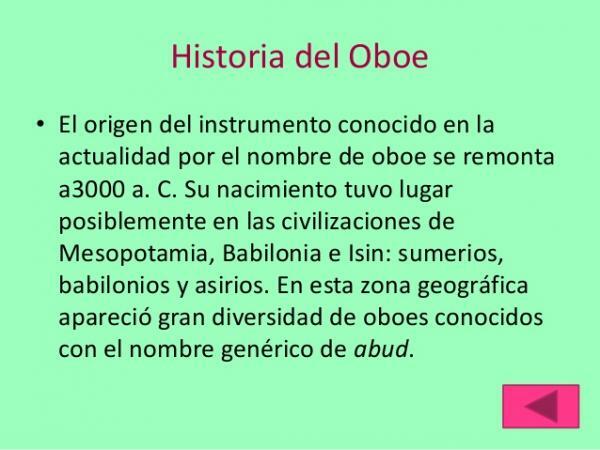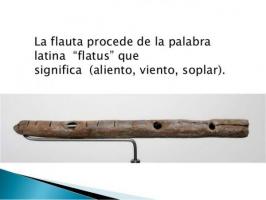Parts of the OBOE and its history

It is said that the works are never finished but are abandoned. The art of creating is a process that seeks beauty and perfection, although somehow it is known that reaching this is impossible. In any case, all creation begins with an idea that has the ability to transcend and pass into other hands to be modified.
This is the case of musical instruments, which begin with a series of principles that last throughout history and evolve thanks to the needs of each era. Each design improves either slightly or dramatically to achieve a specific sound. In this lesson from a TEACHER we will talk about one of these instruments that has endured since ancient times and that has accompanied us in the history of music. We will learn about parts of the oboe and the history of it.
The oboe is an instrument aerophone (producing sound through air) from the category of woodwind instruments. It is played vertically with two hands and is made of wood and metal parts. Its sound is sweet and it has a very distinctive nasal timbre. In the classical formation of the symphony orchestra, it shares the woodwind section with the flute, clarinet and bassoon.

The oboe is taken apart for storage and reassembled to be played again. These parts are thereed, top section, middle section and bell. These parts are held together thanks to parts called cork spikes, which are made of this material to improve the grip of the parts with each other and ensure that the wind passes without any leakage to protect the sound.
Cane
It is the one thin and thin piece that is placed on top of the instrument, in another called piece tudel. The reed is where the instrumentalist blows with his mouth and is the main piece in charge of producing the sound of the instrument. The reed of the oboe is characterized by its double reed.
Upper body and midsection
They are the parts of the oboe that the holes, keys and their mechanisms. These in turn have pieces that manage to connect to each other to work together and actuate.
The keys
They are the series of levers and buttons that work together to cover and uncover the holes in the instrument. This is how the passage of air is altered and the notes change according to the combination of the interpreter's fingers. Some keys have specific functions such as octave keys or pinky keys.
Bell or canopy
It is the last of the oboe parts and is named for its shape. It is this part where the final sound is expelled. The bell affects the sound quality in terms of projection and tone.

Image: Wind Instruments
The origin of the oboe is ancient, using the name "Abud" in the years 3000 BC C. The use of the double reed has been located in Egypt around 2000 BC. C. Over time this instrument spread to Greece under the name "aulos" and then to Rome under the name "tibia". At this time the aulos had a very strident sound and required a lot of skill to play it, yet it still became the most important instrument in all Greece.
During the Middle Ages the oboe lost prominence when competing with the more common "shawm", which also had a reed. It is not until the thirteenth century that the oboe reappeared with force in France, already with the name that we know him. At this time it was an instrument played mostly by jesters and minstrels.
The predecessor version of the oboe appeared in the s. XVI, when Michael Praetorius (from the German region) designs instruments for the entire family. This version is called "bombard". The first use of the oboe as an orchestral instrument occurred in France, with the opera “Pomone ”by Robert Cambert in the year 1671. The oboe later became popular in London and by the 18th century it was already widely used throughout Europe.
The most relevant modifications to the instrument occurred during the Romanticism, Thanks to the industrial Revolution that promoted the evolution in the control of mechanics and sound. Over the years to come the oboe underwent various modifications in its mechanisms. The oboe was perfected during the 20th century in charge of the French Lucien Lorée, whose design we know as such today.
Thanks to the fact that the oboe has such a long trajectory through time, we can say that its sound is undoubtedly an important and influential factor in the history of the oboe. classical music. Now that you know more about its parts, how it works and its history, you may be encouraged to look for one to observe it closely.




